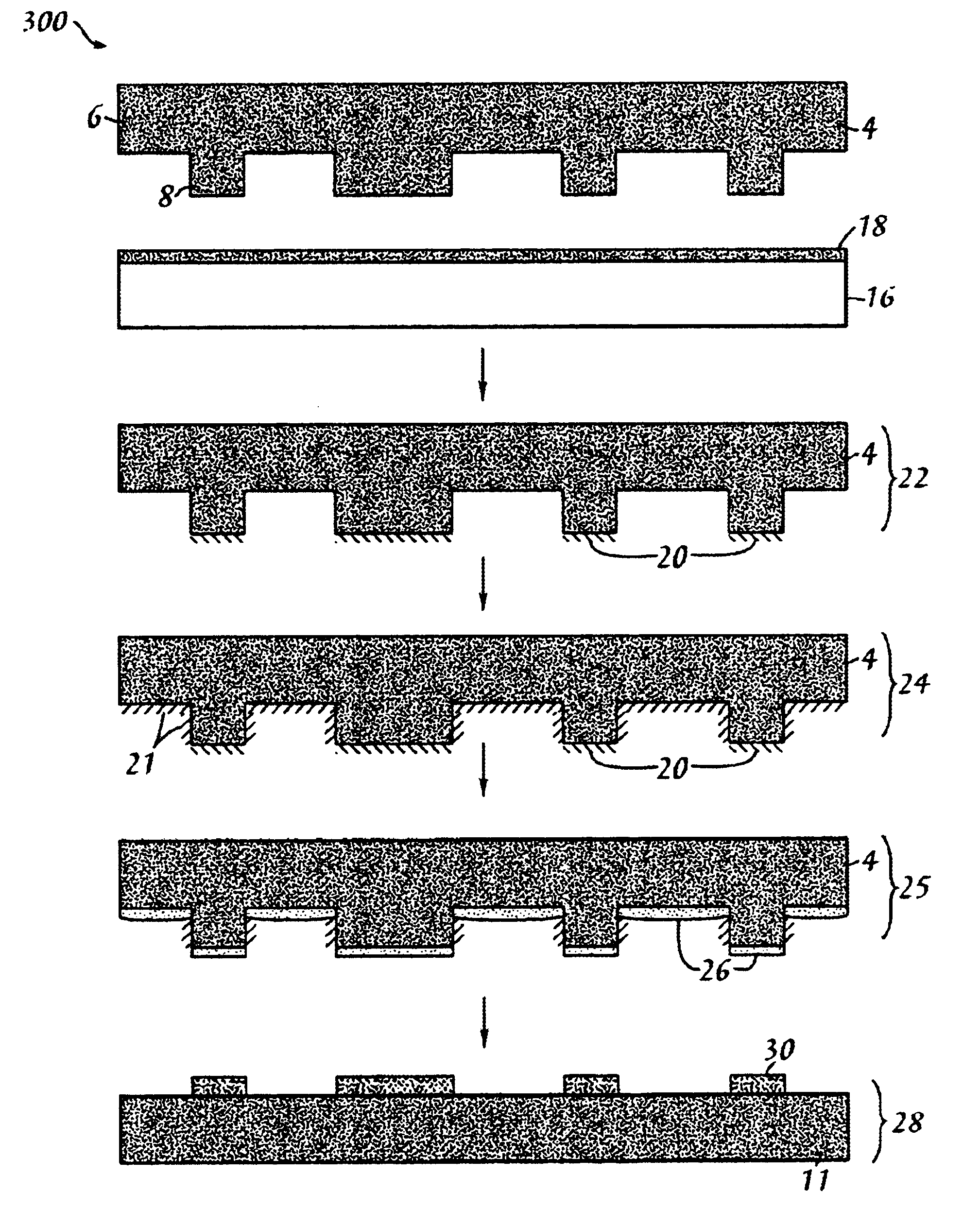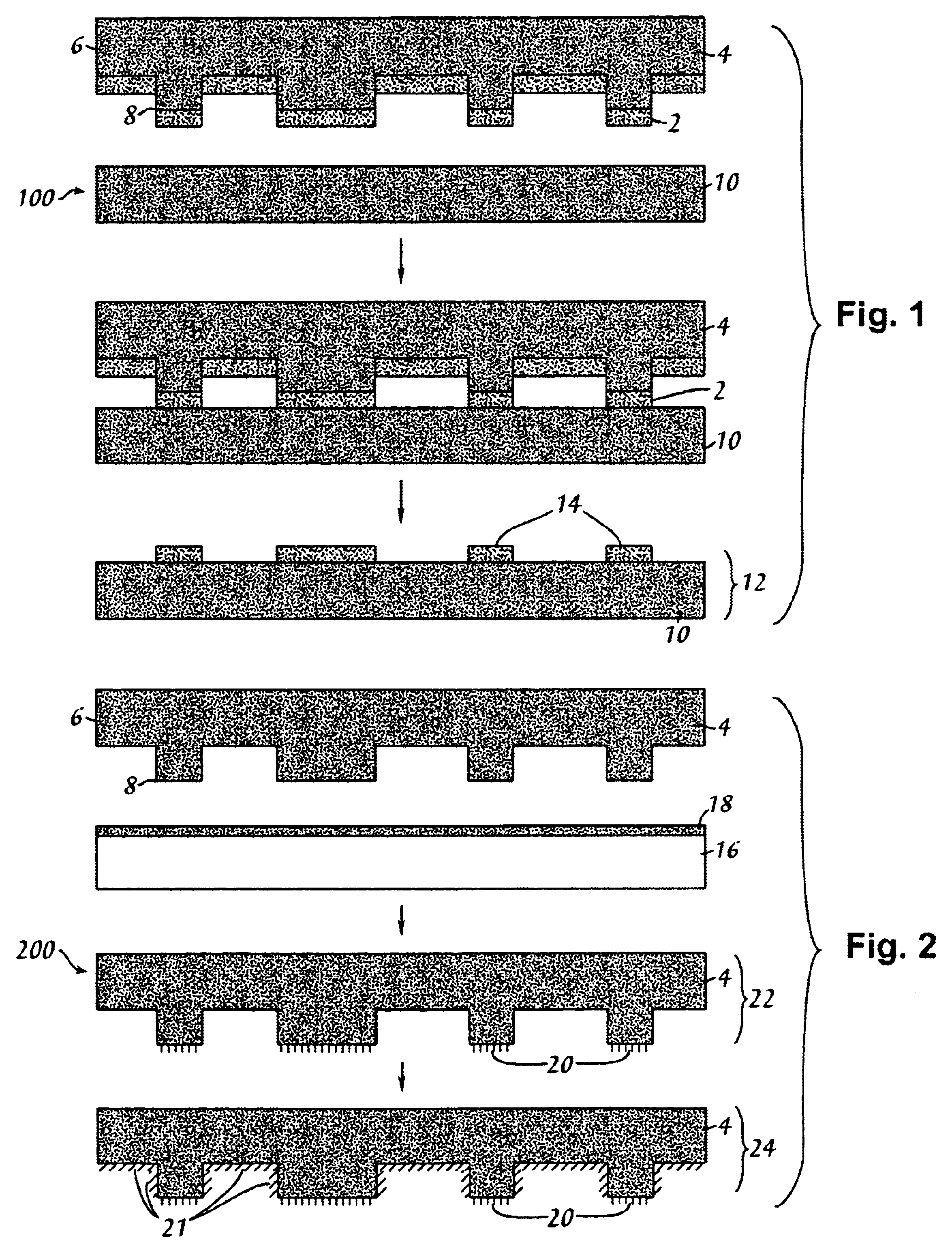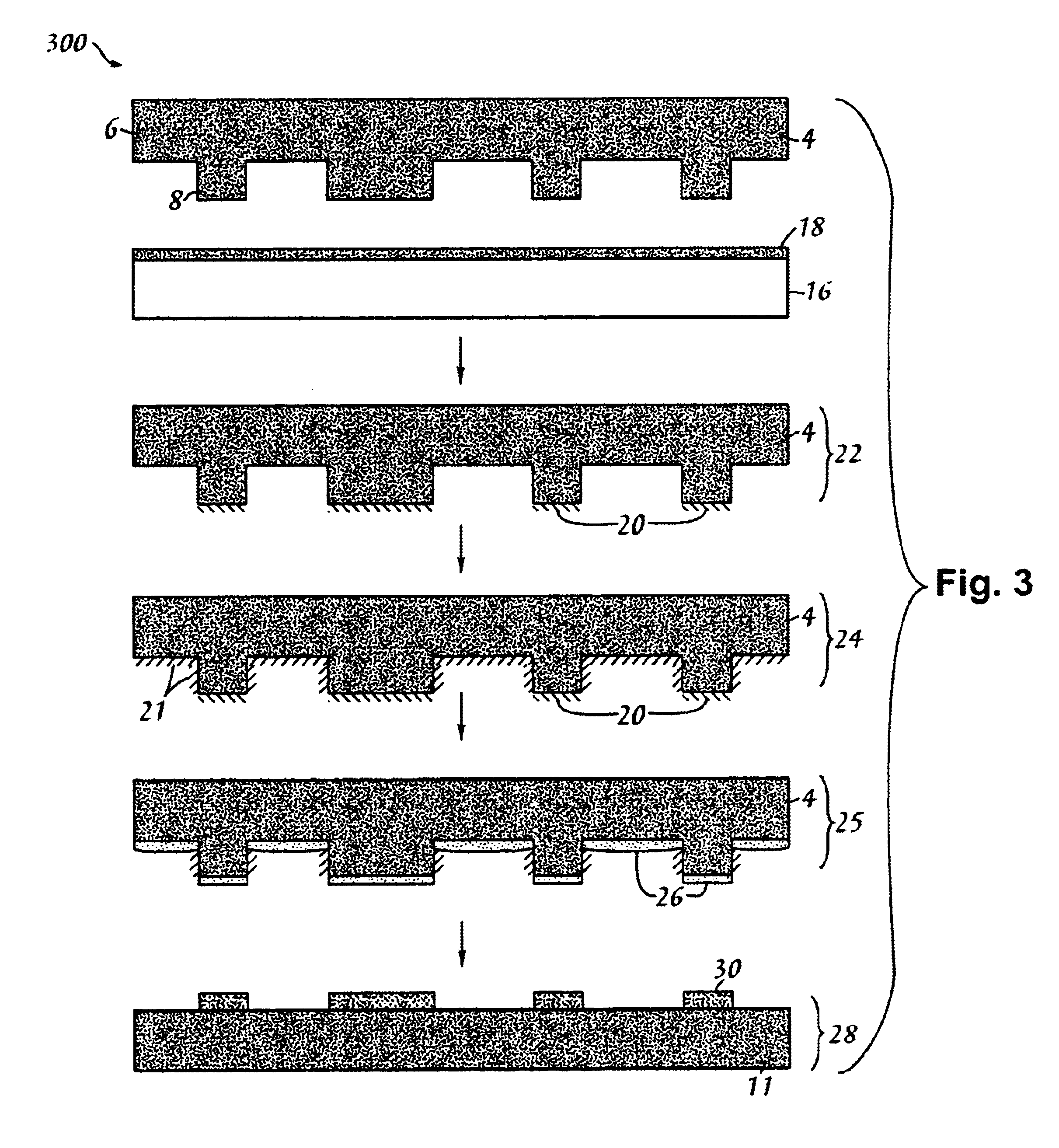Methods of creating patterns on substrates and articles of manufacture resulting therefrom
a technology of substrates and patterns, applied in the field of creating patterns on substrates, can solve the problems of insufficient robustness to be used as the barrier layer in dry etching, the geometry of ever shrinking devices has come to a bottleneck, and the need for high temperature and pressur
- Summary
- Abstract
- Description
- Claims
- Application Information
AI Technical Summary
Problems solved by technology
Method used
Image
Examples
example 1
FIG. 4 demonstrates the effect of selective surface treatment on polymer dewetting on a patterned mold. A 700 nanometer (run) period grating mold was spin coated with 4.5% poly(methyl methacrylate) (PMMA) (Mw=15,000 and Tg=105° C.) solution in toluene and then baked at 130° C. for 5 minutes. In FIG. 4(a), the mold was treated with FDTS solution alone. Because of the low surface energy of the FDTS treated surface, the PMMA film dewetted on the protruded surfaces and broke up into elongated droplets. In contrast, the mold in FIG. 4(b) was treated with selective PETS / FDTS as taught in accordance with the present invention. As the surface energy of the sidewalls was very low, the film dewetted near the edges of the protrusions. However, because of the higher surface energy of the PETS treated top surface of the protrusions, the film is continuous on the protrusions. The dewetted polymer lines were slightly narrower than the features on the mold. The polymer islands illustrated in FIG. 4...
example 2
FIG. 5 shows PMMA inking results with selective MOPTS / FDTS treatment. After spin coating and annealing, the PMMA film on the mold displayed an interesting feature as illustrated in the AFM scan in FIG. 5(a). A raised rim surrounded the PMMA island on top of the protrusions. Similar behavior is also observed on PETS / FDTS treated mold. The raised rim was likely formed by material retracting from the edge of the feature. During annealing, the thin polymer film on the sidewalls started to dewet first. The PMMA film retracted toward both the bottom of the trench and the protruded surface. Because of the higher energy of the protruded surfaces, the bulk of the PMMA film at the interface with the protrusions was immobilized. The retracted film piled up near the edge of the feature until the least interaction potential between PMMA and the surface is reached. Dewetting with this mechanism caused causes the film to shrink into a plateau surrounded with a rim and a pattern dimension change of...
example 3
For thin polycarbonate (PC, Lexan® ML6155-111N, Mw=18 k, Tg=150° C.) coatings on selective PETS / FDTS treated micrometer-sized molds, continuous PC film covers the 500 nm deep mold (FIG. 6(a)) after spin coating. When a relatively deep mold is used, however, isolated polymer islands are formed on the protrusions directly after spin coating. FIG. 6 compares the AFM scans of PC coated 500 mm and 720 nm deep molds. When a deep mold is coated with a polymer solution, the coating thickness on the sidewalls is likely to be very small. Spontaneous dewetting is then possible to occur on the sidewalls during spin coating, resulting in a discontinued coverage as shown in FIG. 6(b).
The polymer islands on protrusions continue to shrink during annealing until the equilibrium contact angle is reached, the resulted dimension change is around 60%. As a result, the inked features are usually much smaller than those on the mold. In fact, this offers a viable method to obtain submicrometer features usi...
PUM
| Property | Measurement | Unit |
|---|---|---|
| temperature | aaaaa | aaaaa |
| thickness | aaaaa | aaaaa |
| thickness | aaaaa | aaaaa |
Abstract
Description
Claims
Application Information
 Login to View More
Login to View More - R&D
- Intellectual Property
- Life Sciences
- Materials
- Tech Scout
- Unparalleled Data Quality
- Higher Quality Content
- 60% Fewer Hallucinations
Browse by: Latest US Patents, China's latest patents, Technical Efficacy Thesaurus, Application Domain, Technology Topic, Popular Technical Reports.
© 2025 PatSnap. All rights reserved.Legal|Privacy policy|Modern Slavery Act Transparency Statement|Sitemap|About US| Contact US: help@patsnap.com



